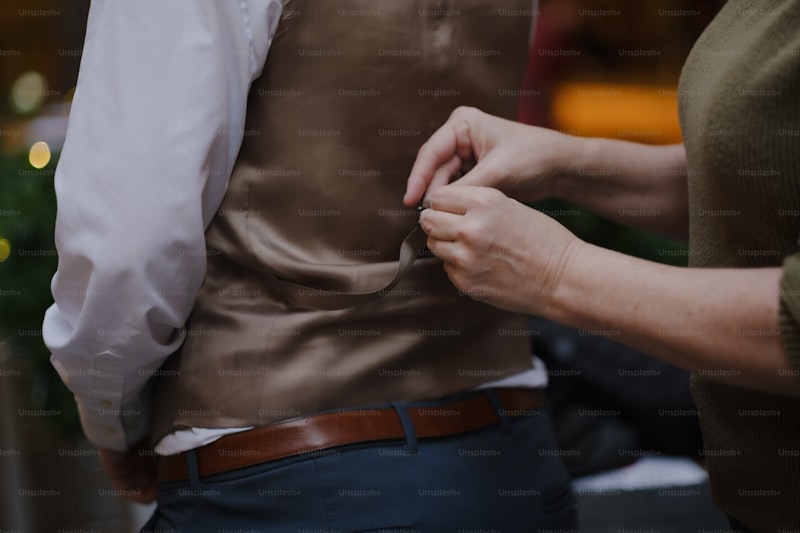Essential Dress Adjustments: Transforming Your Wardrobe with Simple Modifications
Every fashionista knows that a great outfit can make or break your day. One key element in achieving that perfect look lies in making essential dress adjustments. Whether you're dealing with a wedding dress, a casual sundress, or an evening gown, understanding how to properly fit and adjust your dresses can lead to not only enhanced comfort but also improved confidence. In this article, we will delve deep into the world of essential dress adjustments, exploring different modifications, helpful techniques, and tips for achieving a flawless fit.
Understanding Essential Dress Adjustments
Before diving into the types of adjustments you can make, it's crucial to understand the basic principles of dress modifications. Essential dress adjustments involve any alterations that enhance the garment's fit or style. These adjustments can range from simple fixes to more complex changes that require skilled hands. Here are some common types of adjustments:
- Hemming: Adjusting the length of the dress.
- Taking in or letting out: Modifying the waist, bust, or hips for a better fit.
- Adjusting straps: Changing the length or style of dress straps.
- Adding darts: Creating shape where needed.
- Replacing zippers: Upgrading functional elements of the dress.
The Importance of Proper Fit
A well-fitted dress can elevate your appearance and bring out the best in your silhouette. Poorly fitted dresses can lead to discomfort, self-consciousness, and an overall negative experience. Here are a few reasons why proper fit is essential:
- Confidence: The right fit can boost your self-esteem.
- Comfort: Avoids chafing, pinching, and discomfort during wear.
- Style: A tailored dress will always look more polished and stylish.
- Longevity: Properly adjusted dresses are less prone to damage.
Common Dress Adjustments Explained
Let's look at some essential dress adjustments in detail:
1. Hemming
Hemming is one of the most common dress adjustments and involves shortening or lengthening the dress. A dress that is too long can drag on the ground, while one that is too short can be unflattering. To measure for hemming:
- Put on the dress with appropriate shoes.
- Pin the hem at your desired length.
- Mark the line, and remove the dress to sew the hem accordingly.
2. Taking In or Letting Out
Another important adjustment is taking in or letting out the bodice and waist of the dress. This is crucial for achieving a flattering silhouette. Here’s how to go about it:
- For taking in: Pinch the fabric together where needed and pin it.
- For letting out: Open the seams cautiously and adjust accordingly.
3. Adjusting Straps
Straps can significantly change the overall look and fit of your dress. To adjust straps:
- Try on the dress and determine if the straps need to be longer or shorter.
- Carefully unpick the existing straps and either cut or extend according to your needs.
4. Adding Darts
Darts can enhance the fit around the bust, waist, or hips. This method is often used in tailored dresses to create a more defined shape. Here’s how to add darts:
- Pinch the fabric where it needs to be taken in.
- Mark a triangle shape to sew for the dart.
- Sew along the marked lines.
5. Replacing Zippers
Zippers that are stuck or broken can ruin your dress experience. Replacing them can seem daunting but is manageable:
- Unpick the old zipper.
- Insert the new zipper, carefully sewing it into place.
Table of Essential Dress Adjustments
| Adjustment Type | Description | Best For |
| Hemming | Shortening or lengthening the dress | Floor-length dresses, maxi dresses |
| Taking In or Letting Out | Modifying waist and bust for a better fit | All types of dresses |
| Adjusting Straps | Shortening or lengthening straps | Spaghetti straps, strapless dresses |
| Adding Darts | Creating shape around key areas | Tailored dresses, fitted styles |
| Replacing Zippers | Upgrading or fixing broken zippers | Any dress with zippers |

Tips for Successful Dress Adjustments
Making dress adjustments can be tricky but rewarding if done correctly. Here are some tips for success:
- Practice makes perfect: If you’re a beginner, practice on less expensive garments first.
- Invest in quality tools: Use good fabric scissors, a sewing machine, and measuring tape.
- Take your time: Rushing through adjustments can lead to costly mistakes.
- Seek professional help: If you're unsure of your skills, consider hiring a tailor.
Summary and Final Thoughts
Essential dress adjustments are crucial in transforming your wardrobe. With the right alterations, you can turn a mediocre piece into a stunning outfit that fits perfectly and makes you feel fantastic. Whether it’s hemming, taking in the waist, or adjusting straps, each modification can elevate your style and comfort. Remember, the key to successful dress adjustments lies in understanding your body shape, the garment's fabric, and how to manipulate the structure of the dress effectively. Don't hesitate to experiment and seek professional help when needed. Happy tailoring!
As you embark on your alterations journey, keep in mind the importance of a well-fitting dress. It can change your entire look and ultimately improve your confidence. If you're ever in doubt about an adjustment, consult with a tailor or experienced friend for a second opinion.